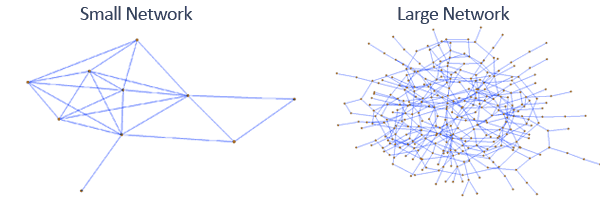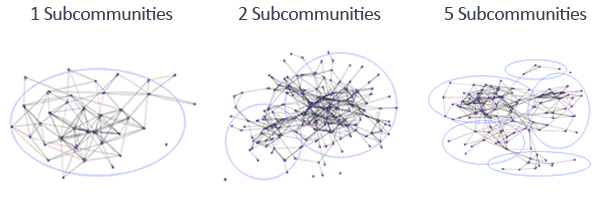Network Structure



Network structure, which represents social structure, is what makes one network look different from another, and also determines the characteristics of a network. A network could be small or large, dense or spread out, have one, two, or many sub-communities and can contain any number of nodes and connections.
There are several ways to quantify the structure of a network as a whole, as well as the individuals within that network. Structural network statistics— density of connection, clustering coefficients, centralization indices, and subgroup characterization based upon mutual connections, closeness, and degree—describe properties of the network as a whole. Nodal network statistics—centrality based upon degree, closeness, prestige, or betweenness—describe properties of individual nodes within that network. The aggregation of nodal network statistics is used to create centralization indices. We analyze the structure of subgroups within a network to identify missing sub-communities. On the other hand, we analyze nodal network statistics to guide research into lending methodologies and characteristics that reduce credit risk.